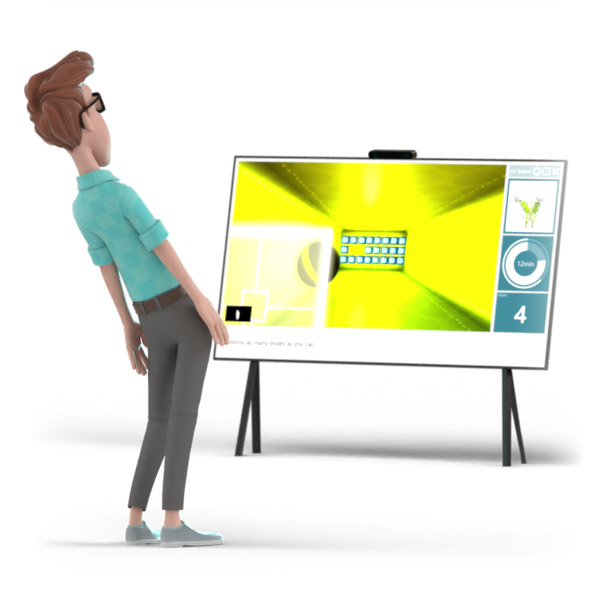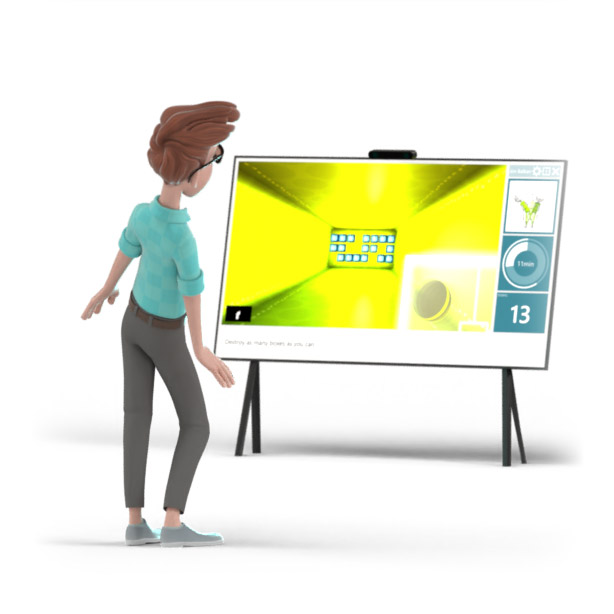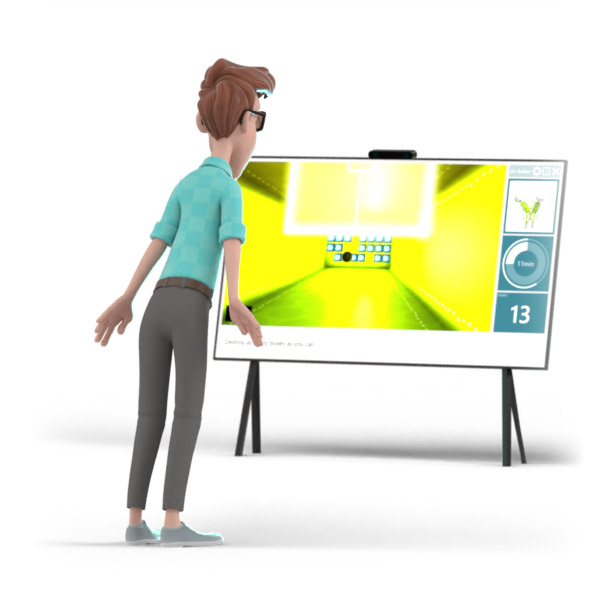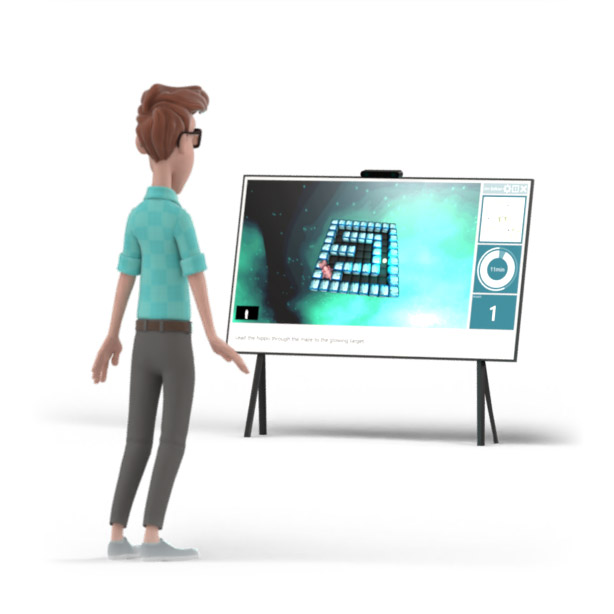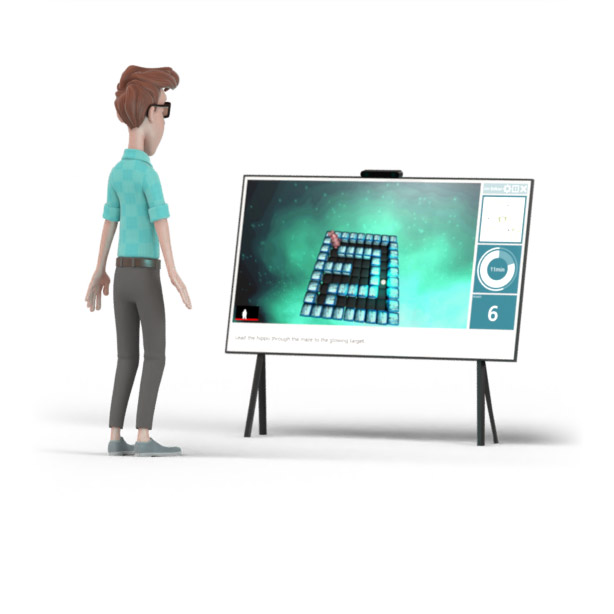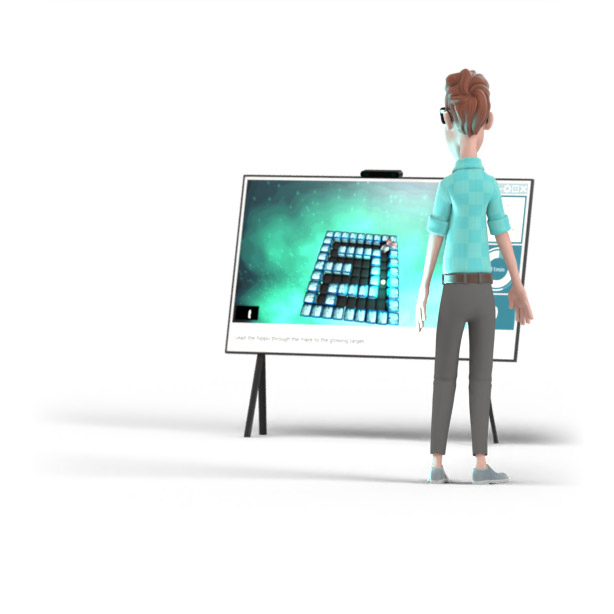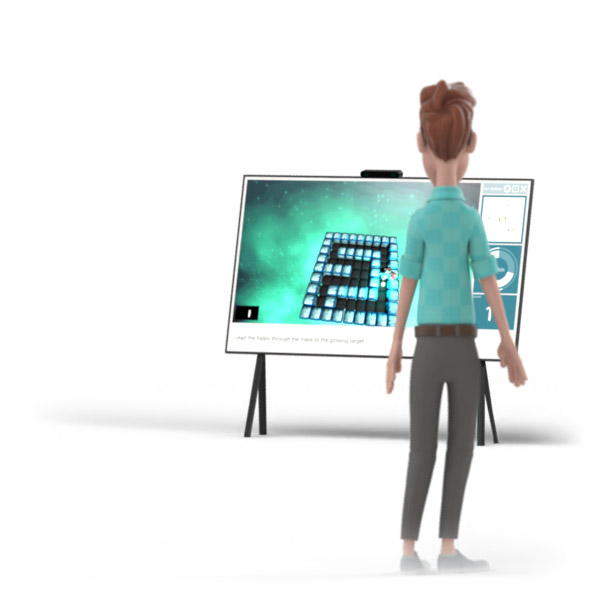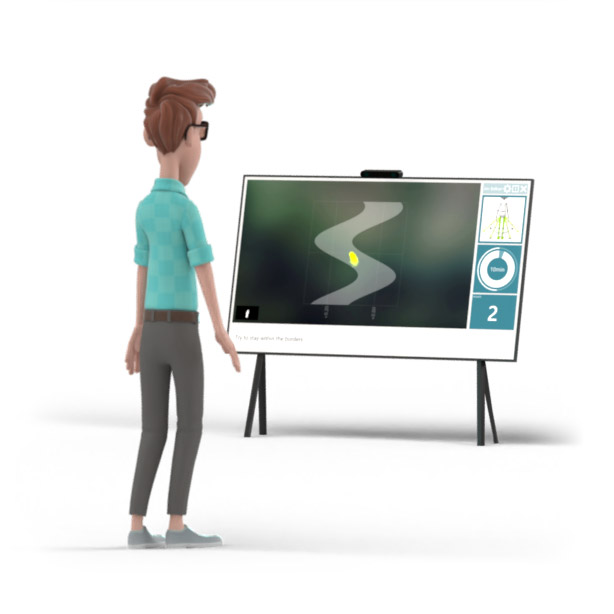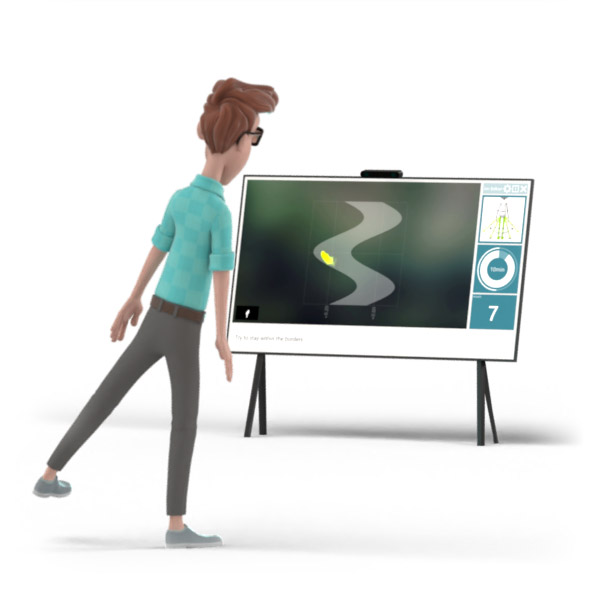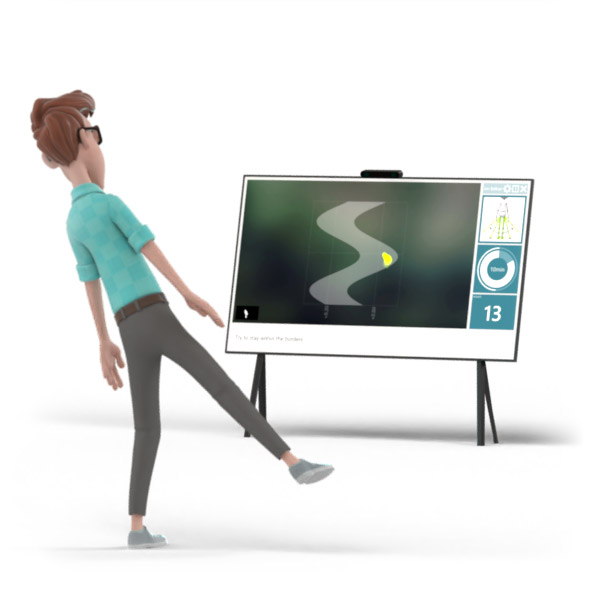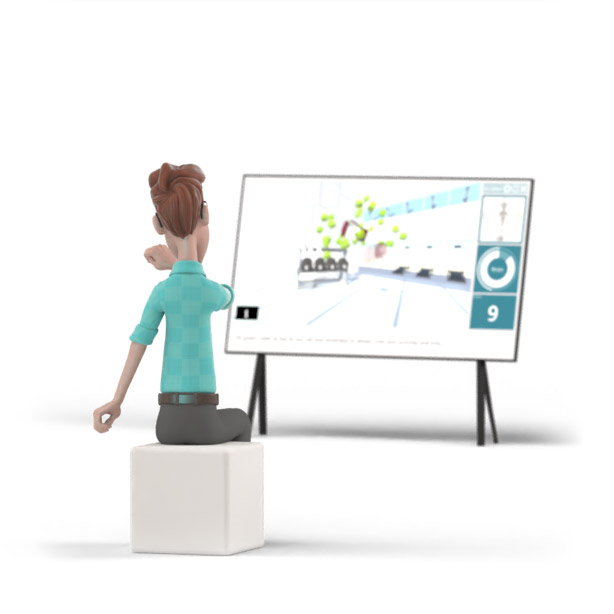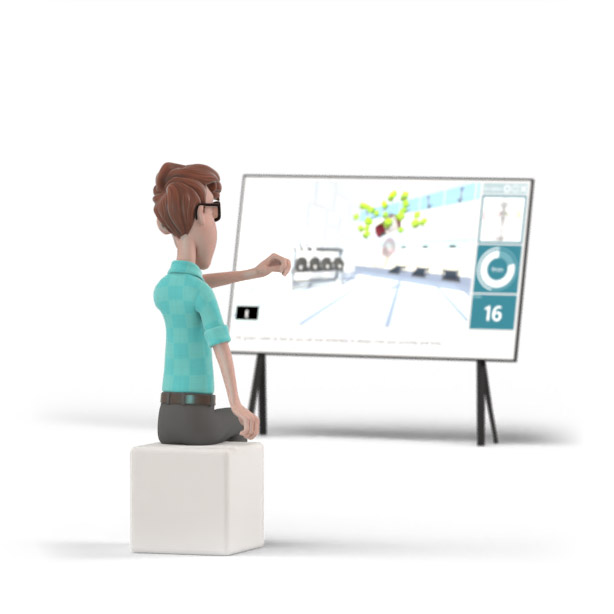VAST.Rehab post
How to use a PC computer as your Patient Station?
VAST.Rehab is an all-encompassing and cutting-edge rehabilitation system that makes use of the latest technological advancements to offer gamified therapy sessions for physical and cognitive rehabilitation. These therapy sessions can be performed on different patient stations, one of which is a PC computer. In this article, we will delve into how therapists can use VAST.Rehab on PC computers, highlighting the various features it offers for effective and enjoyable rehabilitation.
Most important features while using a PC computer
The PC patient station in VAST.Rehab offers therapists the ability to track and customize exercises for full-body and precise hand and finger tracking. It can be connected to third-party medical devices and used for physical and cognitive rehabilitation, making it a versatile tool for a wide range of patients.
Physical and cognitive
The PC patient station is a versatile tool that can be used for both physical and cognitive rehabilitation, making it a valuable resource for a wide range of patients. This includes individuals who have suffered from a stroke or a traumatic brain injury, as well as those with other conditions or injuries that require rehabilitation. By offering a variety of exercises that target different areas of the body and brain, the PC patient station can help patients improve their mobility, strength, coordination, balance, and cognitive function.
Full body tracking
The PC patient station can track the patient's entire body, allowing for a more comprehensive analysis of their movements. This is especially important for patients who need to work on their balance or gait.
Standing and seating positions
The PC patient station allows patients to exercise in both standing and seating positions, depending on their needs and abilities. This makes it a flexible tool that can be adapted to different patients and conditions.
Balance exercises
When utilizing a 3D camera, therapists can assign exercises to concentrate on enhancing the patient's balance, making it an effective approach for aiding patients who have experienced a fall or injury to regain their balance and confidence.
Movements towards the camera
The 3D camera can also track the patient's movements towards the camera. This is especially useful for exercises that require the patient to move closer or further away from the camera, such as reaching or throwing tasks.
Precise hand and fingers tracking
The PC patient station is designed to track even the smallest movements of the patient's hands and fingers. This is especially important for patients who need to work on fine motor skills, such as gripping or pinching.
Easy to connect to big displays
The PC patient station is easy to connect to a large display, such as a TV or projector. This allows patients to see their movements and progress in real-time, which can be motivating and engaging.
Compatible with third-party medical devices
The PC patient station is compatible with a wide range of third-party medical devices, including balance platforms and elastic resistance devices. This enables therapists to gather additional data on patients' movements, posture, and weight distribution, providing a more comprehensive understanding of their rehabilitation progress.
Using Therapist Panel and Patient Panel on the same PC
When using a PC computer as your Patient Station, it can also function as a Therapist Station with a shared screen option. This allows therapists to make adjustments while half of the screen is used for the Patient Panel and the other half for the Therapist Panel. Furthermore, when an additional screen is connected, the smaller screen can be used for the Therapist Panel while the bigger one is used for the Patient Panel, ensuring that patients exercise with maximum comfort.
Which gamified tasks and evaluations are available on PC patient station?
VAST.Rehab offers an innovative and comprehensive system for physical and cognitive rehabilitation, and therapists can utilize the PC patient station to provide gamified therapy sessions. With over 50 gamified tasks and evaluations and more than 70 different Control Modes available, therapists can customize therapy sessions to meet the specific needs of their patients. The gamified tasks cover a range of categories, including range of motion, balance, functional movements, movement precision, movement times, divided attention, problem solving, and memory.
Sample Control Mode: 2D balance
The 2D Balance control mode in VAST.Rehab is a valuable tool for improving a patient's balance control. It requires the patient to shift their body in different directions to reach targets that appear on the screen. The difficulty level of this control mode can be adjusted by therapists, allowing them to tailor therapy sessions to their patient's individual needs. By changing the parameters, therapists can control the strength of body shifting required to reach targets, making it easier or more challenging based on the patient's progress. This allows for a personalized and effective rehabilitation experience.
Sample Control Mode: Walking
The walking control mode in VAST.Rehab is a movement pattern designed to improve a patient's gait and balance. This mode requires the patient to walk to the sides and towards or away from the camera. The distance that the patient needs to walk can be adjusted by the therapist using the system's parameter settings. The goal of this mode is to help patients improve their balance, coordination, and overall gait, which can lead to increased mobility and independence in daily activities.
Sample Control Mode: lower limbs abduction
This control mode is designed to improve lower limb strength and range of motion. It can be parametrized to control the required range of motion to reach the targets, making it suitable for patients with varying levels of mobility. By adjusting the parameters, therapists can create customized therapy sessions that are tailored to each patient's specific needs and abilities.
Sample Control Mode: punching while crossing the body midline
This control mode involves the patient performing punching movements while crossing the midline of their body, which can help improve coordination and range of motion. The system allows for parametrization of the required range of motion to reach the targets, ensuring that therapy sessions are tailored to the individual needs of each patient.
Interested in detailed description of which gamified tasks and evaluations are available for PC patient stations? Please download the brochure below.
VAST.Rehab offers an extensive range of gamified tasks that can be customized to meet the unique needs of each patient. These tasks can be controlled using a variety of control modes, allowing therapists to select the most appropriate one for their patient's rehabilitation goals. Additionally, the system collects various metrics during each task to track patient progress over time. To learn more about the available tasks, control modes, parameters, and metrics that VAST.Rehab offers, please download our brochures below.
Pros and cons of using PC computer as your Patient Station
It is important to be aware of the pros and cons of the PC patient station before deciding which type of patient station will best suit your needs.
Advantages
-
The PC patient station can be easily connected to a large display screen for better visibility during exercises.
-
With the use of a 3D camera, patients can perform balance exercises and the movements towards the camera can be tracked.
-
The PC patient station can be used as both a Patient Station and Therapist Station, especially when a second screen is connected.
-
Bluetooth Heart Rate Monitors can be used to collect the heart rate of patients during workout sessions, providing additional data for therapists to work with.
Disadvantages
-
In order to use a 3D camera, a dedicated NVidia graphics card is required, which can increase the cost of the setup.
Frequently Asked Questions
FAQ stands for "Frequently Asked Questions," and it refers to a list of commonly asked questions and their corresponding answers.
Is PC Patient Station compatible with VAST.Rehab Therapist Panel?
-
PC Patient Station can be used with the Therapist Panel in the same way as all other patient stations.
-
Using the Therapist Panel with the PC Patient Station allows therapists to monitor the progress of their patients and adjust the therapy parameters in real-time, providing a personalized experience that meets the individual needs of each patient. The live preview of the patient's results allows therapists to analyze the data in real-time, making necessary adjustments on the spot. This level of customization allows for a more targeted approach to rehabilitation and ensures that patients are getting the most out of their therapy sessions.
-
By using the PC Patient Station with the Therapist Panel, patients can enjoy the benefits of virtual reality rehabilitation while receiving guidance and support from their therapist. If you're interested in learning more about how the Therapist Panel can be used with the PC Patient Station, a detailed description can be found at how therapists use Therapist Panel.
What hardware is recommended?
To utilize all the features available on the PC patient station, you will need the following configuration:
-
Operating system: Windows 10 or 11 (64 bit)
-
3D camera: Stereolabs ZED 2
-
Processor: Intel i5 CPU 8th generation (or better)
-
Memory: 8 GB RAM (or more)
-
USB 3.1 (or USB 3.0 gen2) port (or better)
-
Graphics card: Nvidia GeForce 1660 Ti or RTX 2060 (or better)
-
TV (40+'' recommended)
Conclusion
Using VAST.Rehab on a PC patient station offers many benefits for therapists and patients. From full body tracking to precise hand and fingers tracking, the system is designed to provide a comprehensive and customizable rehabilitation experience. Additionally, its compatibility with third-party medical devices and its versatility in terms of standing and seating positions make it a valuable tool for any rehabilitation facility.


